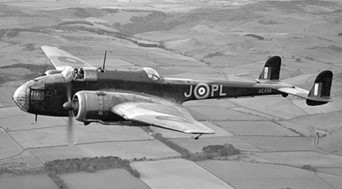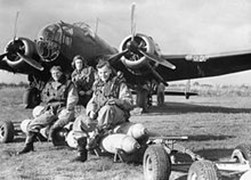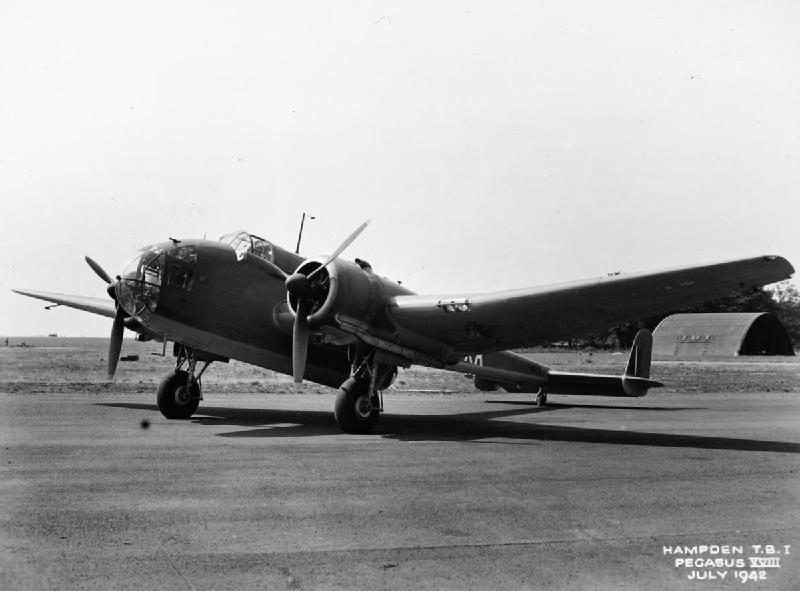Research
Research
Research
Handley Page Hampden

The unique profile of the Handley Page Hampden
(Credit: Imperial War Museum)
In response to Air Ministry specification B9/32 for a twin-engined day bomber, Handley Page developed a stressed-skin mid-wing monoplane, powered by Bristol Pegasus radial air-cooled engines.
The Hampden made its maiden flight in June 1936. The aircraft had a short, narrow but tall main fuselage with a very slender tail unit. This configuration, and the resulting cramped conditions for the crew led to the nickname “the Flying Suitcase”.
Nonetheless, crew described the Hampden as a joy to fly with near-fighter handling. It’s advanced wing design gave it a remarkably low landing speed for an aircraft of its size of just 73 mph, with a top speed of 265 mph, faster than either of its contemporaries, the Wellington or Whitley.
With a crew of four (pilot, navigator/bomb aimer, radio operator/dorsal gunner and ventral gunner), the Hampden first went into service in August 1938 with No. 49 Squadron (RAF). By September 1939, ten squadrons were equipped with Hampdens.
Aircraft from 44, 49 and 83 Squadrons were dispatched in daylight on 4 September to attack German shipping in the Schilling Roads, but before long, and in common with the RAF’s other early bombers, Hampdens were confined to night operations.

Handley Page Hampden of No. 83 Squadron with crew, seated on a loaded bomb trolley at Scampton, October 1940.
(Credit: Imperial War Museum)
Hampden’s of No 5 Group became increasingly committed to bombing German land targets, and flew a variety of missions, bearing the brunt of the early bombing war over Europe, including taking part in the first night raid on Berlin and the first 1,000-bomber raid on Cologne.
With the ‘heavies’ coming on stream in 1942, the Hampden was retired from Bomber Command service late in that year. The last Hampden operation was flown on 14/15 September by crews from 408 Sq. against Wilhelmshaven.
In total 1,432 Hampdens were built, 1272 in Britain by Handley Page and English Electric. The other 160 aircraft were built in Canada by the Victory Aircraft consortium. Of these, 84 were shipped by sea to Britain, while the remainder were sent to Patricia Bay, British Columbia, to set up No.32 OTU (RAF).
Due to heavy attrition from accidents, a number of “war weary” Hampdens were later flown from the U.K. to Canada as replacements for OTU usage.
489 (NZ) Squadron, a part of Coastal Command, converted to Hampdens in 1942, becoming a dedicated anti-submarine torpedo bomber, carrying out its first torpedo attacks in July of that year with sorties in the Trondheim fjord

Hampden TB Mark I, AN127 XA-Y of No. 489 Squadron RNZAF, on the ground at Thorney Island, Hampshire
(Credit: Imperial War Museum)
At the end of the war, no complete or partial Hampden aircraft were retained for museum display. A rare example of a Hampden being restored by the Royal Air Force Museum. P1344, is one of only three examples of the type remaining and was recovered from a crash site in northern Russia in 1991 and acquired by the RAF Museum.

Handley-Page Hampden fuselage whole again at RAF Museum Cosford
(Credit: RAF Museum Cosford)
August 18, 2024